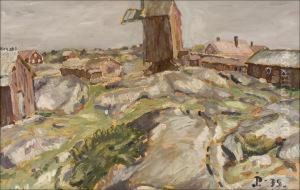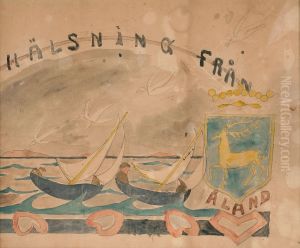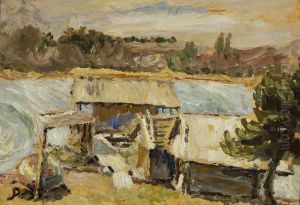Joel Pettersson Paintings
Joel Pettersson was a Finnish artist and writer, born on January 8, 1892, in Lemland, Åland Islands. Despite his relatively short life, he left a significant mark on the Finnish art scene, particularly within the cultural sphere of the Åland Islands. His upbringing in a rural farming community deeply influenced his artistic themes, which often depicted the harsh realities and the beauty of rural life.
Pettersson showed an early interest in drawing and painting, but his path to becoming an artist was not straightforward. His family's modest means and the practical realities of life on a farm meant that pursuing an artistic career was both a financial and cultural challenge. Despite these obstacles, Pettersson's passion for art led him to Stockholm, where he intermittently attended art schools, including Althins Målarskola, though his formal education was sporadic and largely self-directed.
His work is characterized by a unique blend of expressionism and naivism, with powerful depictions of the Åland landscape, its people, and their toils. Joel Pettersson's paintings and writings often reflect a deep sense of solitude and introspection, themes that resonated with his own experiences of isolation and struggle. He was also influenced by the broader European movements of his time but interpreted these influences through the lens of his personal and local surroundings, creating a distinctive style.
In addition to painting, Pettersson was a prolific writer, though much of his literary work gained attention posthumously. His writings include plays, short stories, and poems that explore similar themes of rural life, human connection, and the struggles of the individual against societal expectations.
Joel Pettersson's contributions to Åland's cultural heritage were not fully recognized until after his death on September 5, 1937. Today, he is celebrated as one of the most important figures in Åland's art history, with his works held in high esteem both in Finland and internationally. His legacy is preserved through exhibitions, collections in museums, and academic studies that explore his life and work, highlighting his role as a bridge between traditional Ålandic culture and modern artistic expression.


